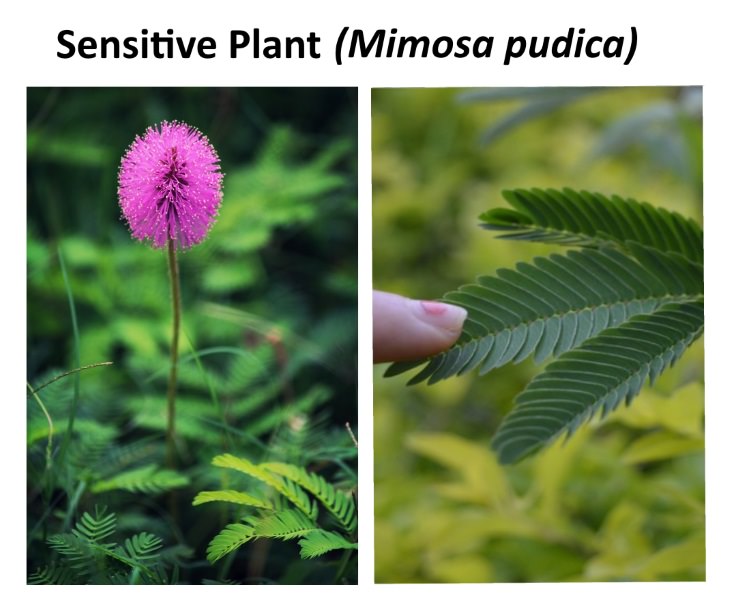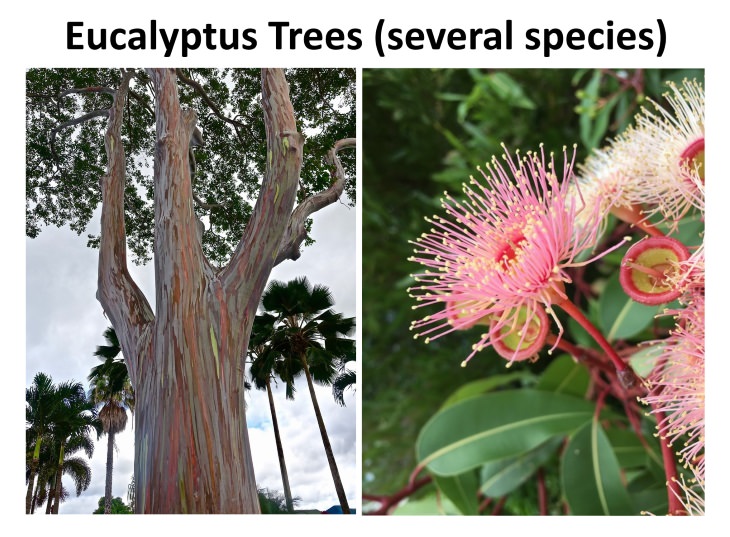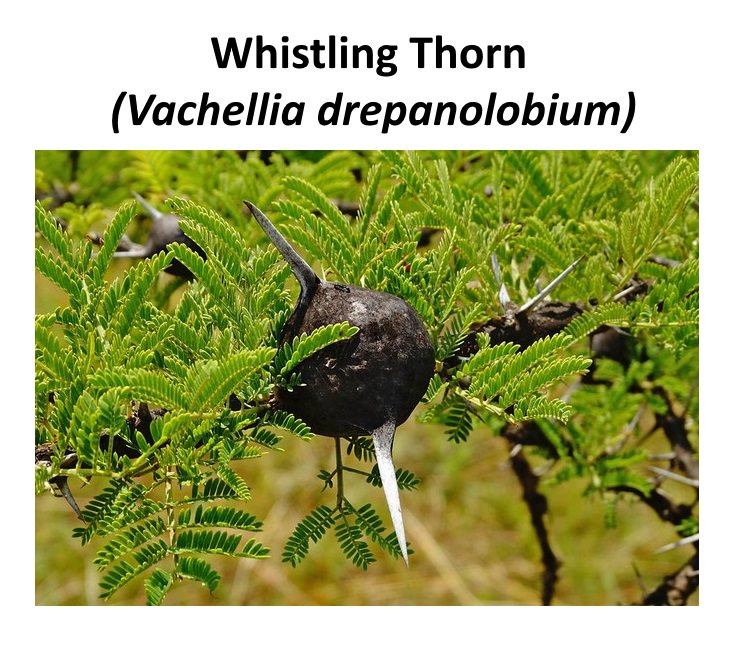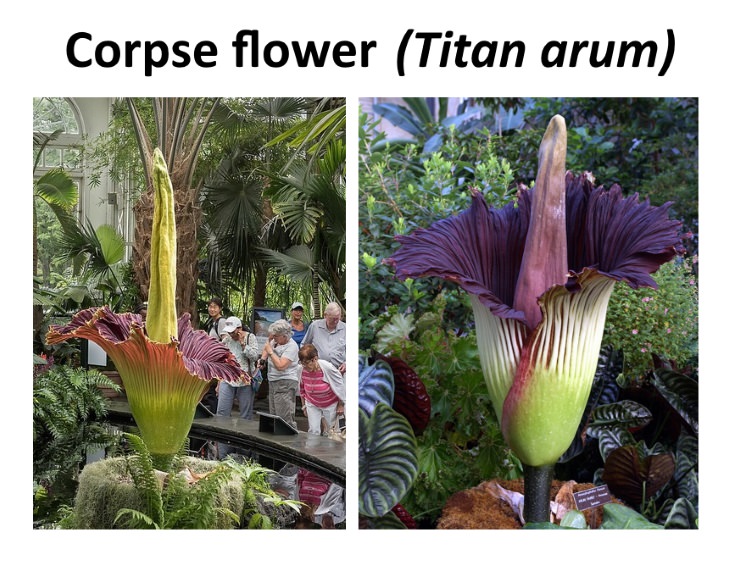1. The Carnivorous Plant: Nepenthes
Nepenthes are a genus of 170 species of carnivorous plants with specified leaves that have a characteristic pitcher-like shape, which made them earn their common name: tropical pitcher plants.
Pitcher plants are common in many tropical forests, especially in Borneo, the Philippines and Sumatra.
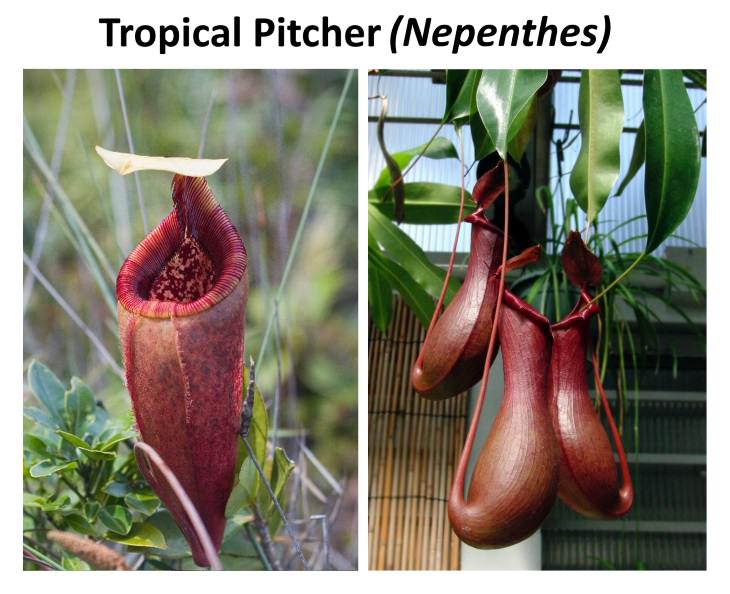 One of the species, Nepenthes rajah is the largest known carnivorous plant (its pitchers can grow up to 41 cm (16 inches) high and 20 cm (7 inches) wide, known for not only capturing small prey, such as insects but also lizards, mice, and even birds.
One of the species, Nepenthes rajah is the largest known carnivorous plant (its pitchers can grow up to 41 cm (16 inches) high and 20 cm (7 inches) wide, known for not only capturing small prey, such as insects but also lizards, mice, and even birds.The pitcher-like formations like the one we showed on the pictures above are devised to catch prey. The narrow rim of the tall, eggplant-shaped pitcher is coated in a slippery substance, which makes the prey easily slip into it and never get out.
The pitcher is filled with slightly sticky liquid that slowly digests the prey.
2. The Tree With Explosive Fruit: Sandbox Tree
This evergreen tree is common in the tropical regions of America and is one of the tallest tropical tree species in this region, sometimes reaching the height of 30 m (100 feet).
The sandbox tree is special for 2 reasons.
First, the bark of this tree is covered in large cone-shaped spikes. It is a protective adaptation, as the spikes prevent animals from climbing and feeding on it, which is why it is also often called monkey no-climb.
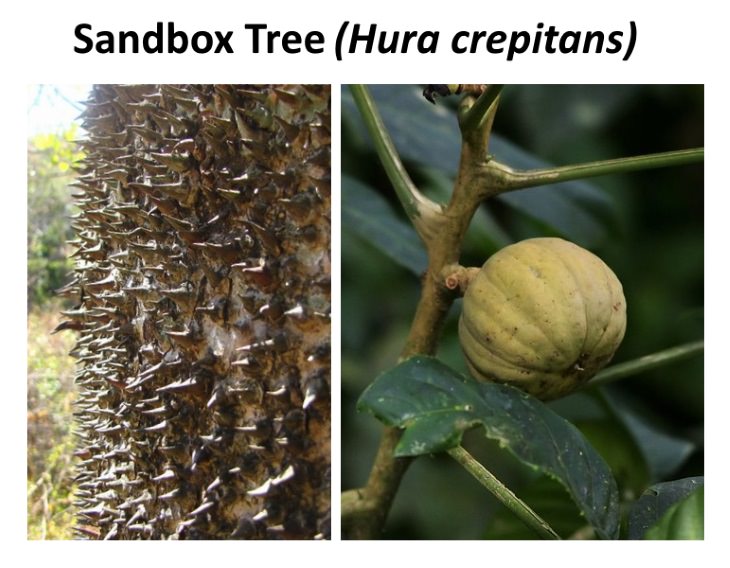
The 2nd curiosity is that the fruit of this plant explodes, disseminating its seeds in a radius of 2 m (6.5 ft). The fruit of the sandbox tree looks like a mini-pumpkin consisting of 12 segments that all fly in different directions upon exploding, each containing a seed.
For this special ability, it earned yet another name: the dynamite tree. In fact, it can be dangerous and this seed explosion can potentially injure a human.
3. The Plant That Can Move: Sensitive Plant
The Sensitive Plant is among the very few plant species in the world capable of rapid movement.
It is native to South and Central America, but because of its ability to move it became widespread all over the world. and it is often grown as a curiosity in greenhouses.
Other plants, such as Venus traps, for example, can also move, but they do to catch prey, whereas the Sensitive plant evolved this feature as a protective measure. It reacts to touch by folding its leaves.
For a demonstration, click on the play button on the video below.
4. The Enormous Flower Parasite: Corpse Lily
This alien-looking flower endemic to Sumatra and Borneo is the biggest individual flower on Earth.
It is a parasite that grows on the bottom part of a few species of vines. The largest known specimen was over 1m (3.4 ft) in diameter and weighed 11 kilograms (24 lb).
Rafflesia arnoldii is quite rare and difficult to locate, as it blooms only once a year and only for a few days.
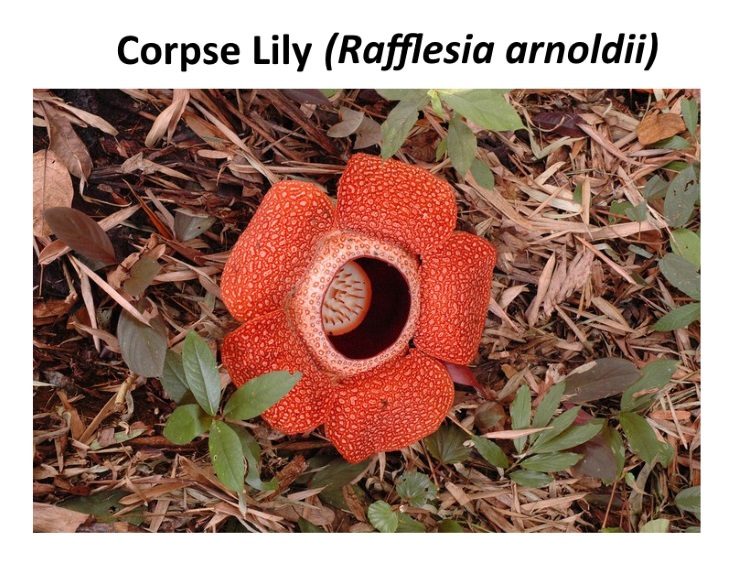
As for the smell, it is less than pleasant, as you can probably tell from its name. The smell of rotten flesh attracts beetles and flies that pollinate it.
Interestingly, entire tourist trips are organized around this flower, and even the revolting smell doesn’t stop visitors from wanting to see the largest flower on the planet.
5. The Plant Capable of Holding a Child: Queen Victoria’s Water Lily
The two species of Amazonia water lilies in the genus Victoria are the largest known on the planet.
They are truly giant, as you can probably tell from the pictures below as well. We displayed the same species, the Santa Cruz water lily, the leaves of which grow 60 to 180 cm (2-6 ft) big and have characteristic upturned edges, which makes it look like a pan.
This pan-like shape inspired its common name, the water platter. The bigger leaves are quite strong and sturdy, too, so much so that the larger leaves can support the weight of a human.
6. The Fire Resistant Tree: Eucalyptus
Eucalyptus trees are native to Australia, but today, they are grown all over the world, and the oil derived from eucalyptus trees is used commercially in medicine and beauty.
Still, not everyone knows that these tall red-barked beauties are highly flammable. The leaves and branches of the tree are infused with oils that can explode and create flame clouds during a forest fire.
As unbelievable as it may sound, the fire doesn’t kill these trees, as deep inside the bark, the tree has special seeds, which activate and start growing from inside the tree bark after the fire.
This way, the explosion generated by the eucalyptus oils helped disseminate seeds after the fire. Scientists believe that eucalyptuses got their fire-resistant adaptations after a long period of constant forest fires in Australia millions of years ago.
7. The Tree That Can Make a Sound: Whistling Thorn Tree
This species of acacia trees is native to East Africa and is quite large, growing up to 6 m (20 ft) tall. This tree grows bulbous hollow thorns and near them, all just to attract some ants.
This way, the tree encourages ants to live on it, which, in turn, will prevent other animals, such as giraffes, from grazing on its leaves.
The common name of the plant comes from the whistling sound that is created when the wind blows through the bulbous thorns that have ant-made entry holes.
You can hear this interesting whistling sound in the video below.
Whistling Thorn Tree Sound
8. The Enormous Flower With a Nauseating Smell: Corpse Flower
Titan arum is a remarkable species: it is enormous, it has a very interesting blooming process, but it is still probably most well known for its foul smell.
Originally, the plant was endemic to western Sumatra, but because of its utter otherworldliness, it is often cultivated in botanical gardens, with crowds of people arriving to watch and smell the rapid blooming process of the flower.
To see one such exhibition at the US Botanic Garden, watch the video at the end of the article.
The flowers of this weird plant are very short-lived: within less than a day, the flower blooms and then collapses, hopefully having been pollinated.
Have we mentioned that this flower is also massive? The largest specimens were over 3m (10 ft) tall! Although, technically speaking, it is not 1 individual flower, rather a cluster of several flowers.
Still, the most outstanding feature of this flower is not its size or blooming pattern, nor is it the fact that it blooms only once in 4–10 years.
The strangest feature is by far the smell of the flower, which has been described as “rotten flesh” or “a dead squirrel with a hint of old socks”. This smell is actually extremely effective at attracting a specific kind of insects that help pollinate the flower.
The Corpse Flower Blooming at the US Botanic Garden

 One of the species, Nepenthes rajah is the largest known carnivorous plant (its pitchers can grow up to 41 cm (16 inches) high and 20 cm (7 inches) wide, known for not only capturing small prey, such as insects but also lizards, mice, and even birds.
One of the species, Nepenthes rajah is the largest known carnivorous plant (its pitchers can grow up to 41 cm (16 inches) high and 20 cm (7 inches) wide, known for not only capturing small prey, such as insects but also lizards, mice, and even birds.
